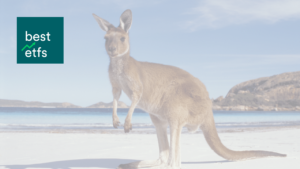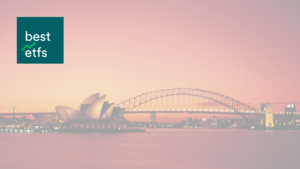1. The iShares J.P.Morgan USD Emerging Markets Bond (AUD Hedged) ETF (ASX:IHEB) ETF
The iShares IHEB ETF provides investors with exposure to the performance of global emerging markets bonds that are US dollar-denominated, hedged back into Australian dollars.
According to our most recent data, the IHEB ETF had $41.35 million of money invested. Given its funds under management (also known as FUM or ‘market cap’) is less than $100 million, you should consider if this ETF is still too small and if it is sustainable for the ETF issuer. At Best ETFs we say an ETF with more than $100 million invested is typically more sustainable than one with less than $100 million (at least). However, there are exceptions to this general rule, especially if the ETF issuer/provider is reputable and committed to growing the ETF’s FUM through effective marketing strategies and distribution to financial advisers.
Fees to consider
According to our numbers, the annual management fee on the IHEB ETF is .51%. The issuer, iShares, collects this fee automatically.
Meaning, if you invested $2,000 in the IHEB ETF for a full year you could expect to pay management fees of around $10.20. This fee is different from the fee you pay to your brokerage provider (e.g. CommSec, NabTrade, SelfWealth, etc.), which is the fee to buy or sell the ETF. In addition to a management fee charged by the issuer, be mindful to check the ‘spread‘ for the ETF.
A fee comparison
Fees aren’t the only key consideration for ETF investors, but it’s an easy thing to do. To understand if the ETF you’re looking at is too costly, compare it with other ETFs from the same sector, and against the industry average. For example, the average management fee (MER) across all of the ETFs covered by the Best ETFs Australia team was 0.5%, which is $10.00 per $2,000 invested. Keep in mind that small changes in the fees paid can make a big difference after 10 or 20 years. You should read the IHEB Product Disclosure Statement (PDS), available on the ETF issuer’s website, because it will detail the fees, tax implications and the latest information.
Want to hear more about the IHEB ETF? View our free investment review.
2. The Vaneck Australian Equal Weight ETF (ASX:MVW) ETF
The VanEck MVW ETF provides exposure to over 60 of the largest and most liquid Australian shares, equally weighted. By equally weighting shares, this ETF aims to reduce concentration risk in specific Australian stocks and sectors.
With our numbers for July 2022, MVW’s FUM stood at $1656.44 million. Since the MVW’s FUM is over $100 million, our investing team would say the ETF has met our minimum criteria for the total amount invested, otherwise known as FUM. A very sustainable ETF in the Equal weight sector should be able to scale well and become profitable for the ETF issuer.
A look at the MVW ETF fee load?
Vaneck, the ETF issuer, charges a yearly management fee of 0.35% for the MVW ETF. Meaning, if you invest $2,000 for a full year from now you can expect to pay a management fee of around $7.00.
This management fee is below the average for all ETFs on our Best ETFs Australia list of ETFs. However, you might still be able to find a cheaper ETF for less.
Want to know more? Get our team’s free MVW ETF review. Simply click here now.
So how can you actually invest the MVW ETF? By getting a free brokerage account with Pearler. If you join Pearler in the month of Mar 2024, with your free Pearler account you can buy the MVW ETF and pay $0 in brokerage fees. All you have to do is buy and hold the ETF for 12 months.
You can invest as little as $500 in the MVW ETF to take-up this offer. Sounds pretty good, right? To invest in MVW for $0 brokerage, simply click here to visit Pearler’s website and sign up.



